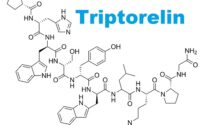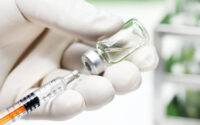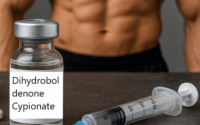Turinabol
 What is Turinabol?
What is Turinabol?
Turinabol, chemically known as Chlorodehydromethyltestosterone, is an anabolic-androgenic steroid (AAS) that has intrigued both the medical community and the world of athletics for decades. The story of Turinabol is not merely one of science and medicine, but also interwoven with politics, sports, and ethical debates.
The Origins and Structure
Turinabol is a derivative of methandrostenolone (Dianabol), modified by adding a chlorine atom at the fourth carbon position, hence the prefix ‘chloro’. This alteration in its chemical structure renders it a milder steroid than its predecessor, intended to minimize the androgenic effects such as accelerated male pattern baldness and increased hair growth, while retaining its anabolic muscle-building capabilities.
Medical Uses
Initially, the medical uses of Turinabol varied from protecting against bone degradation, aiding in recovery from surgery or physical trauma, and treating conditions that resulted in involuntary weight loss. It was the less virilizing effects of Turinabol that also made it a preferred choice for treating certain cases of androgen deficiency in both genders. However, as the understanding of the adverse effects of long-term steroid use evolved, the medical application of substances like Turinabol became more restricted and eventually fell out of favor.
The Dark Side of Turinabol: Doping in Sports
Perhaps the most controversial chapter in the history of Turinabol is its role in systematic doping programs. It became infamously associated with the state-sponsored doping program of East Germany, particularly during the 1970s and 1980s, known as “State Plan 14.25.” Athletes, often without their knowledge or consent, were administered Turinabol to enhance their muscle mass, stamina, and overall performance. The success of this clandestine program was mirrored in the inordinate number of Olympic medals won by East Germans; however, it also led to significant health issues for many involved, including hormonal imbalances, infertility, and increased risk of cardiovascular diseases.
Mechanism of Action
Turinabol operates by facilitating the anabolic processes in the body: it increases protein synthesis, nitrogen retention, and red blood cell count. These physiological changes are critical in muscle growth, repair, and in improving the endurance levels of an individual. Its ability to bind with androgen receptors, albeit weaker than testosterone, contributes to its effects on muscle gain without the pronounced androgenic side effects.
Ethical Considerations and Future Directions
The saga of Turinabol serves as a cautionary tale about the ethical dilemmas and health risks associated with performance-enhancing drugs. It raises crucial questions about consent, the limits of human performance, and the essence of fair competition. As science advances, there is a continuous search for safer, legal alternatives to achieve the beneficial effects of steroids like Turinabol without the adverse health implications.
Conclusion
Turinabol exemplifies the double-edged sword nature of steroid use in medicine and sports. Its development represented a milestone in pharmaceutical science, aiming to harness the benefits of testosterone with reduced side effects. The story of Turanabol is a reminder of the complexities and ethical boundaries in the quest for excellence, both in healthcare and human performance.


